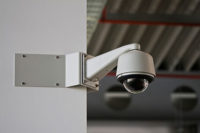It is very confusing these days to determine the differences between all of the product acronyms that are used to describe video recorder products. Life was simpler when the video recorder choices were between DVRs or VHS recorders. Now we have NVR, HVR, HD-DVR, HD over Coax, mobile, edge, VMS and others that are making it difficult to differentiate between these products.
With so many choices, it is clear that selecting the right recording platform isn’t going to get easier anytime soon. So, instead of just looking at the recording acronyms, your best option is to look at the platform and specifications. Understanding those will assist you in selecting the right product for the specific operating environment and application requirements.
Recording Platforms
The recording platform is broken into three main systems that are used for comparison. These are based upon the hardware, operating system and recording application software that make up the recorder. This is the key to making an informed decision on which product will be the best for your enterprise’s surveillance-recording environment.
The hardware platform is traditionally considered the most valuable of the three system comparisons areas. This was true for many years; however it has been become more commoditized. Hardware is still very important, but its value is becoming increasingly dependent upon the operating system that enables it. Linux dominates low-end recorders, but Windows equally dominates the high-end. The mid-tier is almost a 50/50 split. Each has its benefits and drawbacks, but Microsoft is quietly building a long-term strategy to win over the surveillance recorder marketplace. Last, there are several hardware characteristics that still contribute to the overall perception of value: video, network, storage input/output, the storage system and the physical form factor of the recording device.
Input/Outputs
Video input and outputs are typically the most important of all hardware platform decisions because they are so closely tied to the recording device’s main purpose. Much of the emphasis these days is on the input side and the number and type of video channels supported. But the output side is gaining importance because of the continued advancements with video integration standards. For the CSO this means improved visualization. Storage is also developing into a key requirement as the recording needs can be better handled by storage subsystems that are connected to the recorder device.
Physical Form Factor
Innovative hardware design is leading to many new physical form factors such as mobile, edge and micro recorders. All of these are enabling recorders to be deployed in harsh operating environments that are not suitable for the typical recorder. Changes in heating, cooling, power and disk drives have created new markets for these new types of recorders. Security enterprise leaders need to understand the changes in hardware offerings when migrating from the legacy DVR hardware platform to the many new options being promoted today.
On the opposite end of the market, high-density recorder environments are now following data center design standards, which allow for much lower power and heating requirements.
Recorder Specifications
The recorder specifications typically determine the product’s abilities – scalability, reliability, interoperability and capabilities.
The reason specifications are taking on a new level of importance is because the surveillance industry is adopting IT standards. These standards are the key building blocks to new classes of recording hardware, which is pushing the boundaries of scale and reliability. This is the most important growth area for next generation recorders. If you look beyond the channel count and compare the recorder record speed in megabytes you start to see clear differences. Most recorders are supporting well below 150 MB/second (1.2 Gb/second).
This is probably the most important specification to emerge, and it is replacing the old recorder maximum frames or images per second comparison standard. With HD or megapixel cameras dominating the market, images and frame rates have less value today, so when comparing systems, make sure you are using the latest standards.
Software Recording Applications
The level of sophistication within the recording application is advancing equally as fast as the above platform and specifications. Recording software is a key area of innovation and comparison. Software is dramatically improving in the recorder, client and mobile viewing applications. It is also routinely associated with a fee, either initially or as a premium offering. Software has a value, and the enhanced surveillance capabilities are gaining market share and delivering new surveillance capabilities. For you, this means increases in operation capabilities, responsiveness, and situation awareness, which results in a high level of physical security. Increasing the system comparative analysis, increased value and focus of recorder systems supports the results of a higher level of physical security capabilities for your security enterprise.
About the Columnist:
Keven Marier is the founder and CEO of Connex International, Inc. He has a 20-year background in technology consulting, publishing and educating within the physical security technology and enterprise IT industries.


